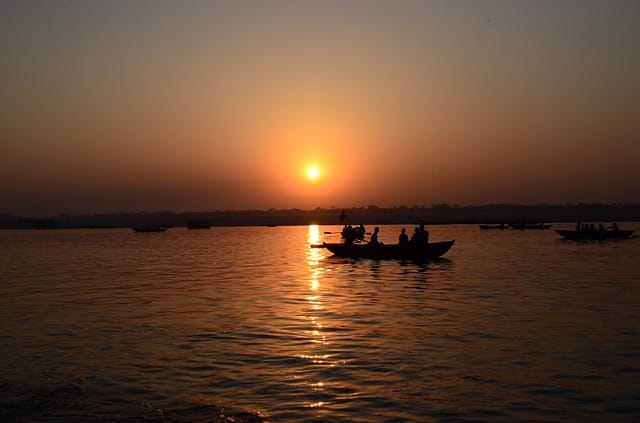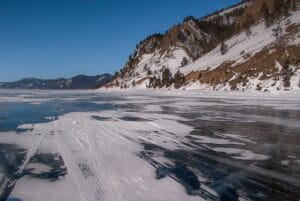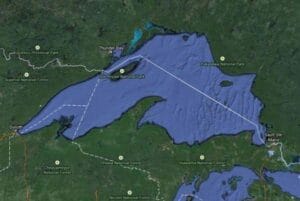India is a country with all types of climate, In India, The rivers originate from the Himalayas and Karakoram ranges located in the North of the country, the Western Ghats in the South, Vindhya, and Satpura range in Central India. There are thousands of Rivers that take birth in India and merges to the Bay of Bengal and the Arabian Sea.
Note: The longest river distance mentioned below covers only within India.
| River Name | Length in India (km) | Total length | Birth Place | Location of Merge |
|---|---|---|---|---|
| Ganges River | 2,525 | 2,525 | Western Himalayas | Bangladesh |
| Godavari | 1,465 | 1,465 | Trimbak, Maharashtra | Antarvedi, Andhra Pradesh |
| Krishna | 1,400 | 1,400 | Mahabaleswar | Hamasaladeevi |
| Yamuna | 1376 | 1376 | Himachal Pradesh | Arabian Sea |
| Narmada | 1,312 | 1,312 | Vindhya and Satpura | Arabian Sea |
| Indus | 1114 | 3180 | Himalayas | Arabian Sea |
| Brahmaputra River | 916 | 2880 | Himalayas | Bay of Bengal |
| Mahanadi | 900 | 2900 | Eastern Ghats | Bay of Bengal |
| Kaveri | 805 | 805 | Talakaveri, Karnataka, Western Ghats | Tamilnadu, Bay of Bengal |
| Tapti | 724 | 724 | Western Ghats | Arabian Sea |
Ganges
The Ganges is the longest river in India, spanning 2,525 km from its origin at Gomukh in the Himalayan Range to its confluence with the Bay of Bengal in Bangladesh. Originating from icy Himalayan glaciers, the river is sustained by meltwater, making it a vital water source.
Revered as sacred in Hinduism, the Ganges plays a pivotal role in India’s culture, spirituality, and livelihood. Its basin supports millions, providing water for agriculture, industry, and daily life.
Despite its significance, the river faces challenges like pollution and overuse, emphasizing the need for sustainable management to preserve its ecological and cultural heritage.

Godavari
The Godavari, India’s second-longest river, flows 1,465 km in Maharashtra, Telangana, Andhra Pradesh, and Odisha before emptying into the Bay of Bengal. Known as the “Dakshin Ganga” or Ganges of the South, it’s a lifeline for millions.
The river originates in Trimbakeshwar, Maharashtra and has several temples and pilgrimage centers along the route. The Godavari Basin is biodiversity- and agriculture-rich, hosting rice and cotton cultivation. It is the Godavari Pushkaram, a festival held every 12 years, where devotees bathe in its waters for spiritual cleansing.
Krishna River
The Krishna River originates from Mahabaleshwar in Maharashtra and flows 1,290 km through Karnataka, Telangana, and Andhra Pradesh to finally merge with the Bay of Bengal. It is one of the major rivers in India, supporting irrigation, drinking water, and hydroelectric projects.
The Krishna is home to the iconic Prakasam Barrage and Nagarjuna Sagar Dam, which are among the largest masonry dams in the world. Mythologically, it is linked to Lord Krishna, believed to bless the river. Despite its utility, the river faces challenges like seasonal fluctuations and pollution, requiring focused conservation efforts to sustain its resources and ecological balance.
Yamuna River
The Yamuna River is one of the most important tributaries of the Ganges and originates from the Yamunotri Glacier in Uttarakhand. It runs for 1,376 km before joining the Ganges at Prayagraj (Allahabad). It passes through cities like Delhi, Agra, and Mathura, which is an important water source for irrigation and drinking. In Hindu mythology, the Yamuna is also associated with Lord Krishna.
This is where the legendary Taj Mahal stands on its banks in Agra. Its health has deteriorated much owing to urbanization and pollution, prompting initiatives like the Yamuna Action Plan to bring back its ecological balance.
Narmada
The Narmada River, often called the “Lifeline of Madhya Pradesh,” originates from Amarkantak Plateau and flows westward for 1,312 km into the Arabian Sea. It is one of the few rivers flowing west from India and is famous for Narmada Parikrama, a spiritual circumambulation along its banks.
The river has breathtaking natural scenery like Marble Rocks of Bhedaghat and Dhuandhar Falls on its banks. Important dams such as Sardar Sarovar support irrigation and hydroelectric power. Its basin sustains rich biodiversity and ancient temples that have a balance of natural beauty and cultural significance.
Indus River
The Indus River is one of the world’s longest rivers, covers 1,114 km in India, which originates from Tibet’s Kailash Range and flows 3,180 km through India and Pakistan to end in the Arabian Sea. It is considered the cradle of the ancient Indus Valley Civilization and is vital for agriculture and its economy. It flows through Ladakh and nourishes cold desert areas in India.
In Indian texts, the river is considered Sindhu, but it has geopolitical importance because of its role in the Indus Water Treaty. However, climate change and water disputes are challenges to its sustainability.
Interesting facts
- Western Ghats Ranges is the hilly terrain and receives heavy rainfall where hundreds of rivers taking the start.











